Technology as we know it has improved the quality of life to a very high degree. Most of the things that we felt were impossible or incapable of years back have become everyday things we do. One of these advancements can be seen in the case of the wheelchair. There was a time when those without the ability to move had to be carried by others. However, with the different types of wheelchairs, things have become way more manageable.
When we talk about wheelchairs, there are standard forms that we often see in hospitals, in the mall, our neighborhood, and other places. However, there are still several different types of wheelchairs that most don’t even know about but don’t worry, you’ll learn it all in this article. So, let’s get into the business of the day.
A wheelchair, as the name suggests, is simply a chair on wheels. It is a chair with a straight back, attached firmly to a set of wheels, with locks and handles to control and navigate. The wheelchair is used to transport the elderly, sick, paraplegic, and those that can’t move.
The idea of a wheelchair can be traced back to 1595, when it was used by the Spanish King, King Philip II. However, after the king died, the chair’s design wasn’t passed on, and it wasn’t seen again until much later in 1655 when a man named Stephan Farffler made one for his use. The idea of the wheelchair kept appearing and disappearing over the centuries until finally, in 1916, a patent was requested, and then later in 1950, it became a well-known concept.
Since then, the design of the wheelchair has been changing, and new designs have been created to suit the ever-changing needs of the people. Let’s look at some of these attractive new designs and types of wheelchairs.
The one constant thing with us humans is growth, we get an idea, and a few years from then, we start seeing different improvements and variations to that idea. The same thing has happened with wheelchairs. We all know the standard type is the manual wheelchair, but several other types have long been created for different uses. Here are the types of wheelchairs.
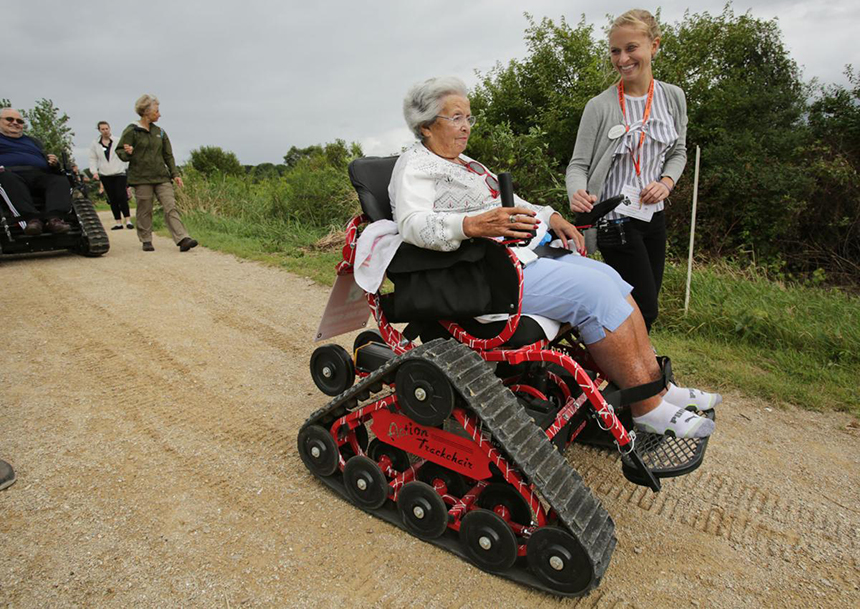
This fantastic design of a wheelchair is not your typical type of wheelchair. Instead, as the name suggests, the wheelchair is designed to be used on all sorts of terrain, from mountain trails to mashy paths and many.
The chair wheels are not your regular wheels, and they are fitted with large, tough inflated tires that can take the rain of any terrain. In some cases, the wheels are usually fitted with tank tracks, yes that’s right, the type of track you see on armored tanks.

This is the most common type of wheelchair; it is this type that you see almost everywhere you go, in hospitals, malls, the neighborhood, and more.
This type of wheelchair doesn’t have all the extra gadgets and tools that come with the more advanced forms of wheelchairs. It is called a manual wheelchair because it requires somebody to push the wheelchair around. You realize most times when you see this wheelchair in use, and there is usually somebody pushing from behind, either a nurse or a relative.
The person in the chair can move it themselves, but it is less convenient and requires considerable effort. There are different types of manual wheelchairs, and some include; the lightweight wheelchair, like the Karman Healthcare wheelchair, which is designed with a superlight frame. Other types are; sports, pediatric, reclining, transport, Heavy-duty, and Hemi-height wheelchairs.
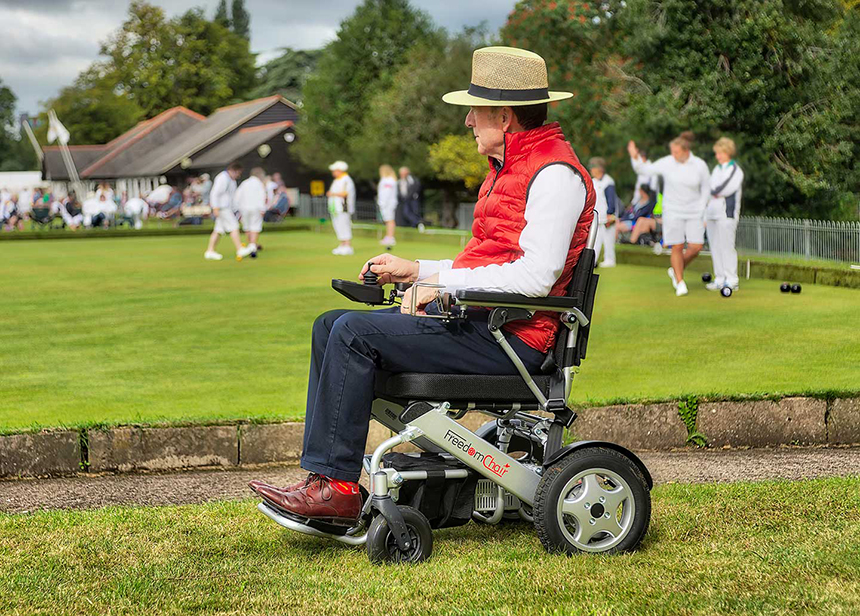
These wheelchairs are usually an excellent choice for most people because, unlike manual wheelchairs, they can be controlled and navigated using controls and buttons.
With electric wheelchairs, the need for assistance from a nurse or relative to push is eliminated, giving the user a better chance at mobility. Of course, the price of this chair is very different from the manual type of wheelchair, and it is expected that this chair costs more. However, the price is worth it, and it is an excellent choice for those that don’t have the physical strength or coordination to move a manual wheelchair.

These wheelchairs are designed mainly for use by airports.
They are used to transport people with disabilities off and onto the plane. The design of the wheelchair is such that it can be used comfortably between the tight rows of the seat; the chair is designed with a more petite build than regular wheelchairs, and it is also considerably lighter. Also, the chair is designed just like the regular airplane seat with all the buckles and safety gadgets, and you can sit comfortably and well-strapped throughout the flight.
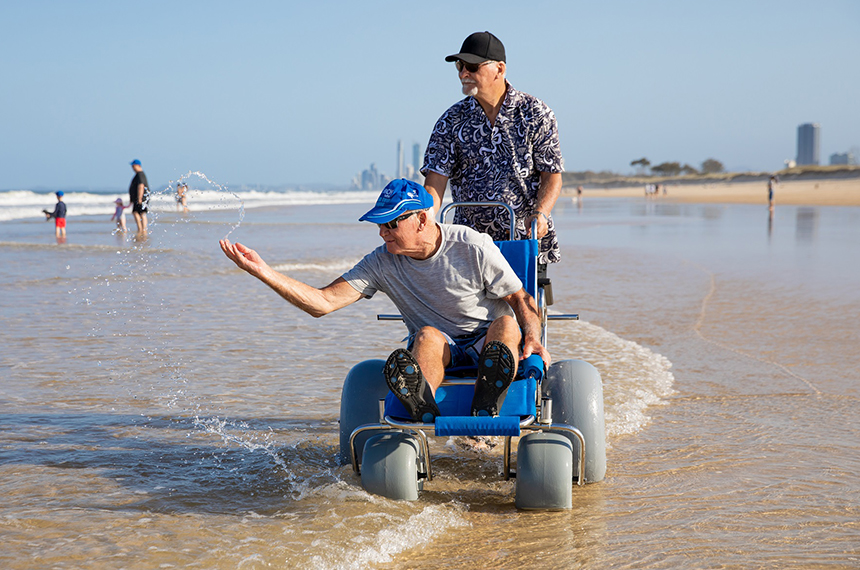
If you’re familiar with a beach bike, then you have a good idea of what a beach wheelchair looks like. The design of this wheelchair is such that you can traverse with ease across the beach’s soft sand.
The frame of the wheelchair is made from very light aluminum tubes or sometimes PVC. The chair wheels are the main highlight; they are usually enormous and have this bouncy look. With this wheelchair, you are sure to have an excellent, unhindered time moving across the beach.

The chair is automated for easier control and movement.
With wheelchairs, one size doesn’t necessarily fit all. Sometimes, it can be a challenge to get a suitable wheelchair for plus-sized users. This is what inspired the design of this type of wheelchair, and it is designed to fit plus-size users; the wheelchair is built more muscular, and the seats are more expansive.

One look at this chair is not enough to determine what it is because the chair is a hybrid.
The design of this wheelchair revolves around the idea of two different chairs, the standard manual wheelchair, and the office chair. The chair takes the spinal support of the office chair and merges it with the mobility of the manual wheelchair.
The design makes the chair very comfortable to sit in for extended periods, and it has improved lumbar support. As a result, this chair is suitable for those that spend a lot of time in their chairs or work from their chairs. However, the chair doesn’t have automated functions, requiring direct manual force to move it.

This wheelchair is designed mainly for little kids.
The wheelchair is the same design as the other forms of regular wheelchairs, and the only difference is that they are made smaller and more children friendly. In addition, the wheelchair usually comes with fancily designs and paintings that kids like.
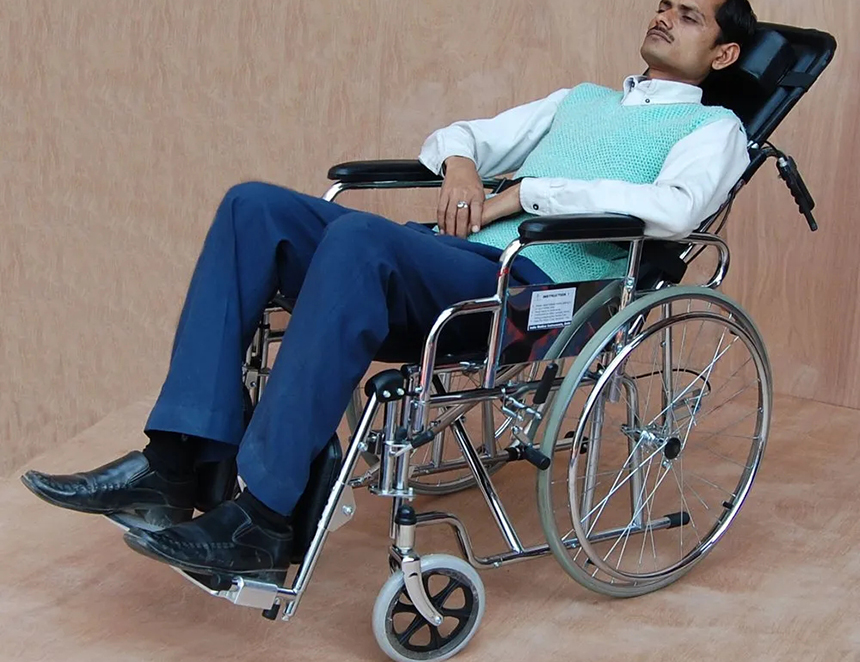
You can also extend the parts of the chair to form a recliner. It has this transformer’s feel, which is very cool.
As the name suggests, this is a wheelchair that can serve as a recliner. The design of this chair brings with it a lot of practicality, and it is an excellent choice for a wheelchair. The wheelchair is designed as a regular wheelchair, and you can use it for your day-to-day transport needs.
This wheelchair is more of an improvement to the manual wheelchair. The manual wheelchair requires the user to use both hands to propel it, which can be stressful and tiring to both arms. However, the single-arm drive wheelchair solves that problem; users can now steer this wheelchair with just one hand. The wheelchair uses an axle to connect the two large wheels so that you can move both wheels with just one hand.

The racing wheelchairs also have their unique feature, the two back wheels also have the same angled feature as the sports wheelchair, but the racing wheelchair has just one small front wheel.
This wheelchair is designed for use during sports, and it has the same basic structures as the other forms of wheelchairs. However, there is a slight difference between the large back wheels. The wheels are designed to be angled inwards at the top and outward below; this gives room for more complicated turns and maneuvers that are characteristic of sports.

This chair allows you to experience that feeling of moving around at eye level with others despite any disability, and it is also suitable for those that don’t enjoy sitting for extended periods.
The unique trait of this chair is that it can stand upright. This chair allows the user to adjust it to go from a sitting position to a fully extended standing position. Also, you can still move around in the chair while in that standing position.

The price of this wheelchair is also higher than most other types, but it is sure worth the amount.
The tilt wheelchair is very similar to the reclining wheelchair in terms of functionality. They both can get the user into a very relaxed position, although how they achieve, it varies a bit. The tilt wheelchair is designed to tilt the chair to the back to allow for a more comfortable position. This wheelchair is excellent for spinal cord injury or cerebral palsy, and others can also use it.

The structure aims to make the chair as light as possible; the back of the chair is shorter to reduce the weight, and it doesn’t have armrests most times.
As the name suggests, the central defining feature of this wheelchair is the weight. Therefore, the chair is designed with weight’s primary goal in mind. As a result, the material used in the production of this wheelchair is incredibly lightweight and lighter than other materials used in making other forms of wheelchairs.
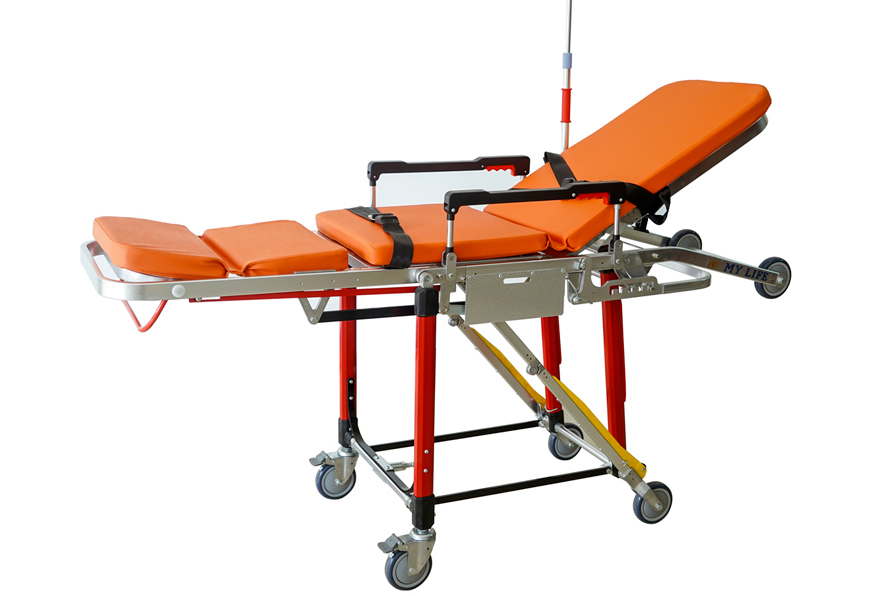
You can bend the chair’s back 180 degrees, and it has another set of handles to be used as a stretcher.
This type of wheelchair is used mainly by hospitals, emergency response units, or EMTs. The chair can be used both as a wheelchair and as a stretcher.
There is no set logic to determining what type of wheelchair is suitable for the elderly, as numerous factors can be taken into consideration. Most of the wheelchairs listed above are suitable for the elderly. However, some are more advisable than others.
The electric wheelchair is also a great choice and probably the best since it can be controlled by the user and doesn’t require any assistance. The ergonomic, reclining, and ultra-light wheelchairs are also excellent choices if the conditions are right. The HI-fortune medical wheelchair is also an excellent choice for the elderly with its full-length padded armrests and lightweight features, which agree with the weak bones of the elderly.
Every person with paraplegia needs a wheelchair, and it is key to their movement and independent mobility. However, getting a suitable wheelchair for these sets of people can be tricky, and a lot of thought and a doctor’s recommendation Trusted Source Wheelchair Prescription | Definition and Patient Education A doctor must first assess your ability to walk and move before they provide you with a wheelchair prescription. If your doctor determines that you’ll benefit from using one, they will send your prescription and supporting medical information to an insurer-approved wheelchair supplier. www.healthline.com will also help. The following are choices to consider; electric wheelchairs and mobility scooters, reclining wheelchairs, ultra-light wheelchairs, wheelchair stretchers.
Having one form of disability or the other that restricts the use of the legs doesn’t mean the end of a person’s life. With the advancement of technology, you can now get numerous wheelchairs that are specially designed for any type of activity you want to do.
We can see examples of those who participate in the paraplegic Olympics and the amazing feats they manage to pull off, which is an obvious indication that a physical challenge is not a limitation unless you make it one. We’ve shown you types of wheelchairs and how they operate, so have a great time picking one that works perfectly for your needs.